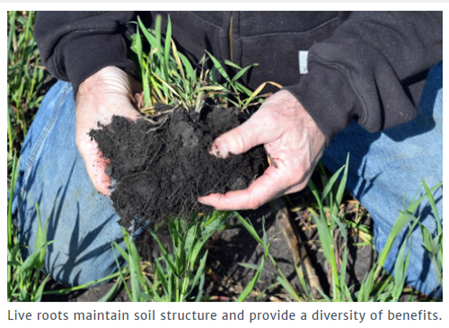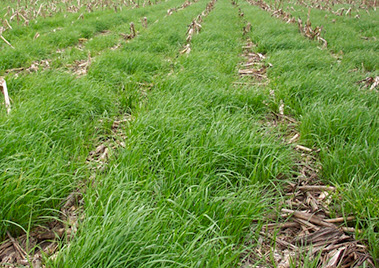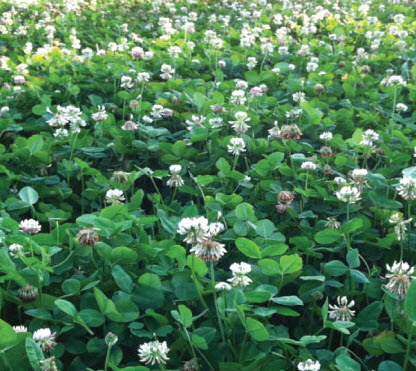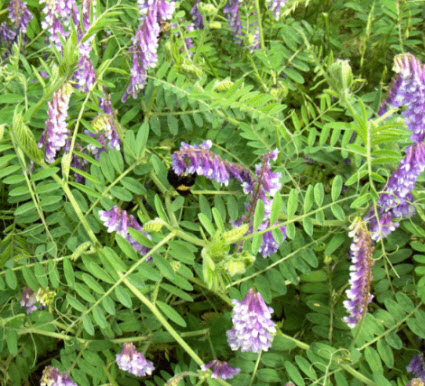Click below to listen to my 2 min. Garden Bite radio show: Planting cover crops
Let’s talk green manure. No, I’m not talking about an animal with a gastrointestinal issue but cover crops. These are plants with a purpose.
They can help with soil erosion, weed control and even fix what’s ailing your soil. The University of MN Ext. says living roots help maintain nutrients, support a diversity of soil microorganisms, and help the soil retain water.

As the weather cools into September, you can plant oats, peas, buckwheat or annual ryegrass which will grow in cool weather and keep the weeds out, then die in winter.

There are crops that overwinter, such as clover, however, you’ll need to kill it (dig it up) to plant your vegetable garden and till it into the soil, which might be more work than it’s worth. IF you choose clover, there’s a large variety of white clover called “Ladino” which is supposed to be particularly beneficial. You’ll turn this under a couple of weeks before you plant next spring.

Another nitrogen fixer is ‘Hairy Vetch’, this may also survive the winter and you’ll turn it under it come spring. Sow the seeds thickly to keep out any weed seeds and mow the plants down if they flower, or cut off the flowers to prevent any self seeding and your cover crop becoming just a weed itself.

If you’ve planted peas or beans in your garden, turn the dead plant material under after a killing frost rather than haul them out to the compost bin. There is a great tool from The Midwest Cover Crop Council to help you decide which cover crop to plant!

Many garden stores sell cover crop seed, as do vegetable seed catalogs. If seeding by hand, try drilling seed-sized holes in a bucket, fill it with seed, and walk up and down your space.
